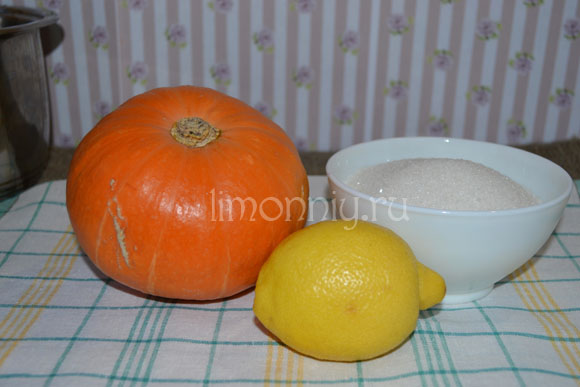Pumpkin jam with lemon
I think that all pumpkin lovers will support me if I say that the recipe for pumpkin jam with lemon is, so to speak, a “classic of the genre”, it’s hard to find a better combination for pumpkin. No matter how many types of pumpkin jam I cook with various additives, every year pumpkin jam with lemon is always prepared, and is usually eaten first.
I try to plant or buy "winter" varieties of pumpkin, they can be perfectly stored for almost six months, so the jam can be cooked in small portions when there is a free minute and desire. There are no difficulties in cooking such jam, it is very difficult to spoil it, even a hostess just starting to cook can cope with cooking.
For pumpkin jam with lemon, you need products in the following proportion:
- 1 kg of pumpkin pulp;
- 600 g of granulated sugar;
- 2 medium sized lemons
Accordingly, depending on the weight of the available pumpkin, you will need to reduce or increase the amount of sugar and lemons.
Step by step, pumpkin jam with lemon should be cooked like this:
1. Cut off the peel from the pumpkin, remove the pulp and seeds. Before starting, do not be too lazy to sharpen the knife well, peeling the pumpkin from the peel is not the easiest thing. Pumpkin seeds can not be thrown away, but washed, dried on a towel for a day, and then a little fry in a pan, they contain many useful substances, and they are simply very tasty.
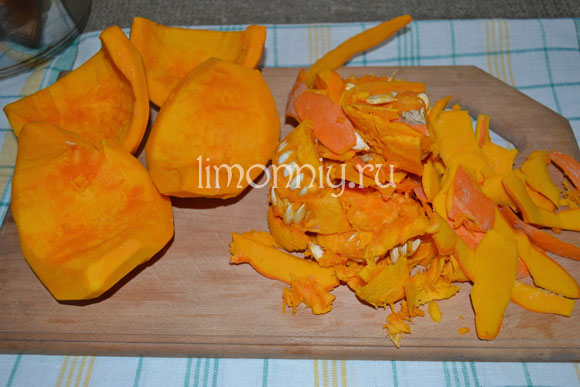
2. Cut the pumpkin pulp into pieces, preferably at least 1.5 cm thick, so it is less likely that they will lose their shape during cooking. Weigh the pumpkin, accurately calculate the required amount of sugar.
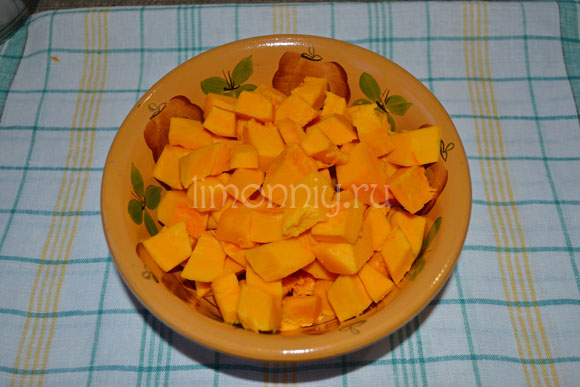
3. There are two options for preparing a lemon for cooking. The first is to simply twist the lemon in a meat grinder and mix with pieces of pumpkin. I prefer the second way - grate the zest of a lemon on a medium or fine grater, and then cut it into slices, removing the seeds. So the maximum juice and aroma will be taken from the lemon, and the jam will be more beautiful.
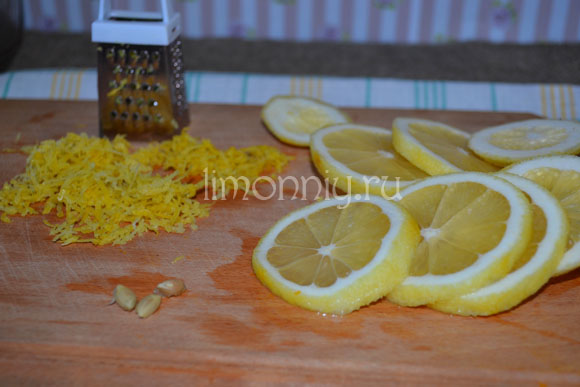
4. Put the pumpkin, zest and lemon slices into a cup (or immediately into the pan), sprinkle everything with sugar, close the lid, leave for at least three hours. It is necessary that the pumpkin and lemon “give away” so much juice that it almost covers the entire pumpkin. The time it will take, of course, depends on the type of pumpkin, so if you are not familiar with the type of pumpkin, I think that the best option is to cut the pumpkin with lemon in the evening, then in the morning you will definitely get a full cup of juice.
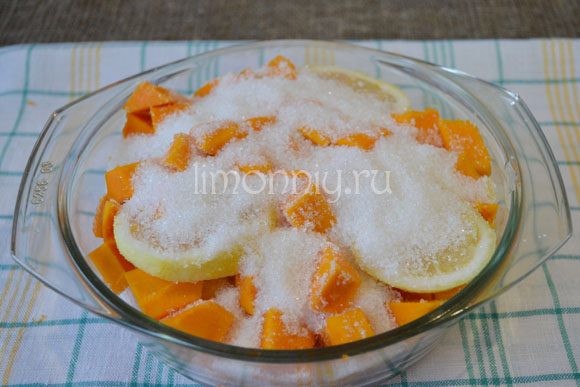
5. And now, when enough juice has stood out, you can start making jam.
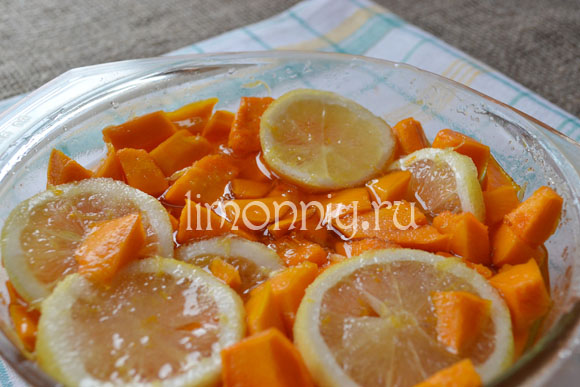
6. For cooking, it is better to take dishes with a thick bottom, so burning is almost eliminated. Put the saucepan (stewpan) with the future jam on a small fire, bring the mass to a boil and immediately remove the saucepan from the heat, do not cook. Put the pan in a cool place, if there is no such place, then just leave it in the kitchen. The pumpkin needs to cool down completely.
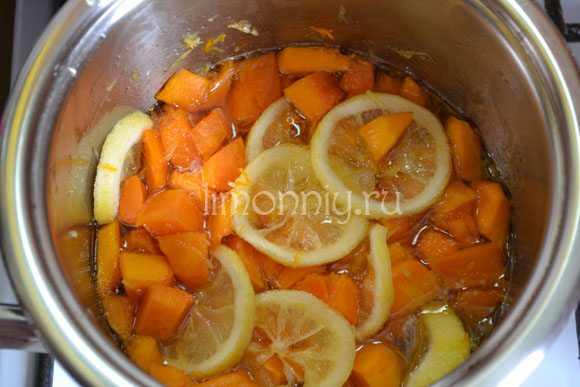
7. When the pumpkin has cooled almost to room temperature, put the pan back on a small fire, bring the jam to a boil and cook now for 20 minutes without closing the lid. Here it is necessary to make a reservation about this. If at the end you want to get jam in the form of pieces of pumpkin floating in syrup, then it is important not to overcook the pumpkin. But there are varieties with very dense pulp, then after the first stage with cooling, the pieces are still very hard, then the mass must be brought to a boil again and cooled again, and only then cook for 20 minutes over low heat, removing the foam. Then remove the pan from the heat and immediately put the jam in the jars, removing the already not very beautiful slices of lemons.
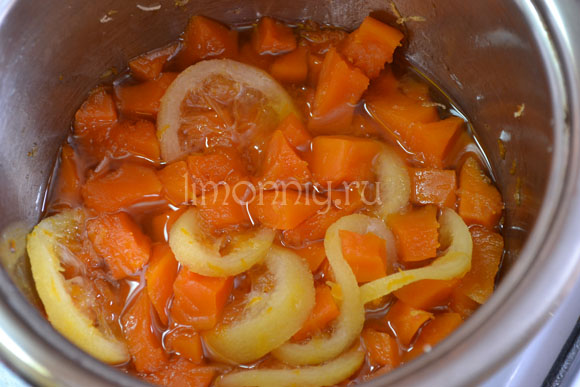
8. Pre-prepared jars (washed and sterilized) must be warm by the time the jam is laid out in them, otherwise they may burst. Filled jars close tightly with lids or roll up.
9. Leave the jam at room temperature for a day, and then put it in a cool place if possible.
You can experiment a little with flavors by replacing half the lemons with, for example, an orange or a lime.
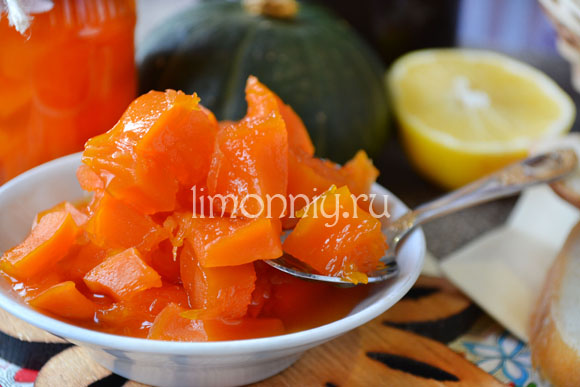
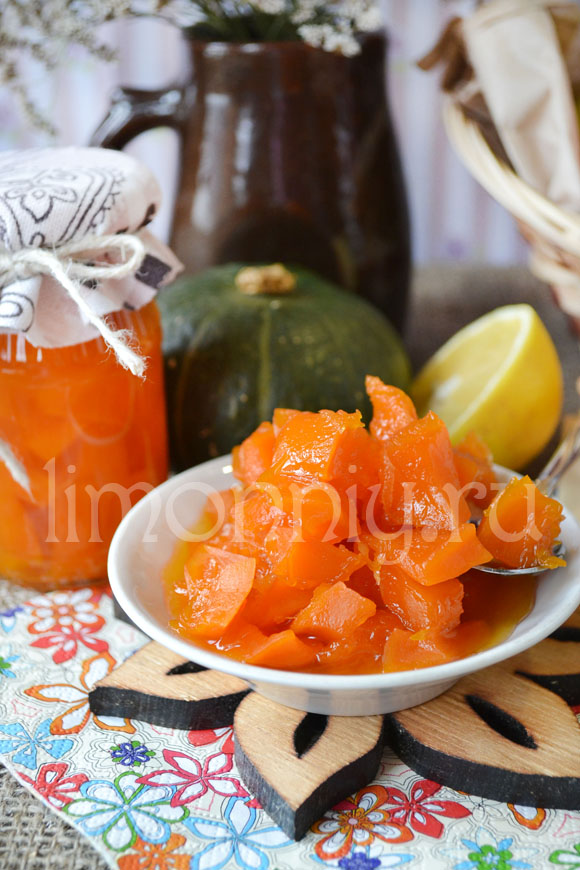

Anastasia Dvornikova (Honeybuny) especially for
2014, . All rights reserved. Copying materials is prohibited.

